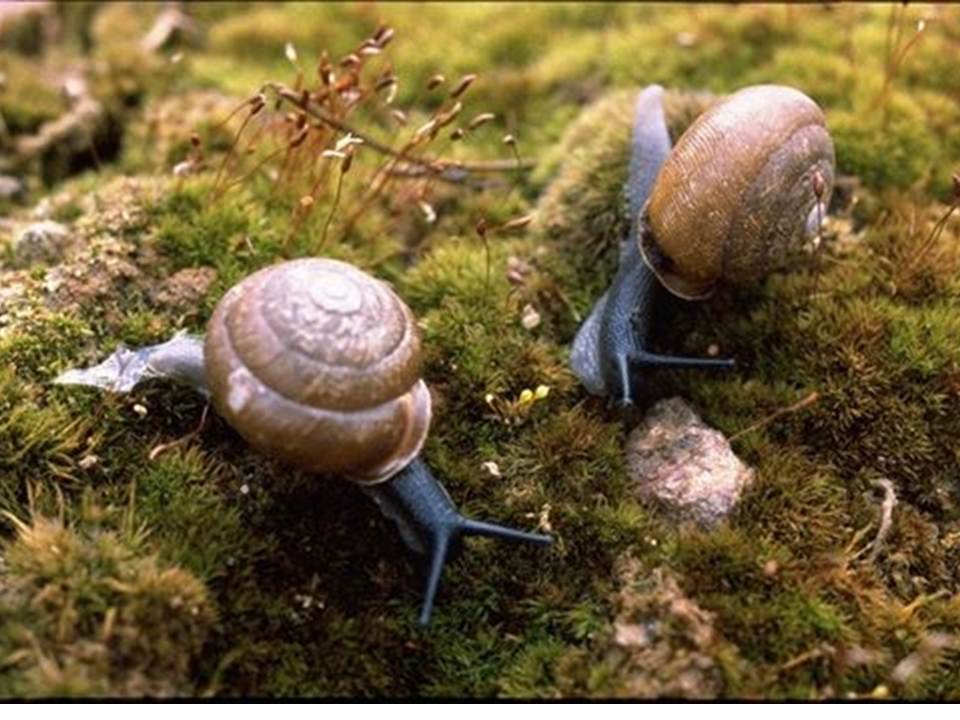Nutrition
Within the Gastropoda class many modifications have developed in order to enhance abilities to obtain food and proper nutrition. For example, all gastropods have a developed radula, often described as a tongue-like organ, that functions by scraping off food from surfaces to be ingested (Hickman et al., 2009). Along with the radula, land snails have a highly complex digestive system to absorb nutrients necessary to function (Hickman et al., 2009). After the food is taken in by the radula, it is passed down the esophagus and ultimately into the gastric pouch where digestion takes place (Hotopp, 2005). Attached to the gastric pouch is the digestive gland, which assists in breaking down food (Hotopp, 2005).
Land snails also have an open circulatory system
consisting of a pumping heart and only partially contained hemolymph (Hickman et al., 2009). Hemolymph, the equivalent of our
blood, is flowing freely over the organs and poorly distributes nutrients
(Hickman et al., 2009). With an open
circulatory system, oxygen is not efficiently distribut
(Hickman et al., 2009). Hemolymph, the equivalent of our
blood, is flowing freely over the organs and poorly distributes nutrients
(Hickman et al., 2009). With an open
circulatory system, oxygen is not efficiently distribut
The diet of Inflectarius ferrissi mainly consists of plants, fungi, and decaying organic matter (Solem, 1955). Similarly to other terrestrial snails, I. ferrissi consumes a greater variety of food ranging from tree sap to a large selection of vegitation (Dourson, 2006).
For most terrestrial snails, plants serve as the
primary food source, however, a wide variety of food is also consumed
(Hotopp,
2005). This variety can be attributed to land snail’s
generalists behavior and part-time role as a decomposer
(Hotopp, 2005).
Unlike most animals, terrestrial snails are interesting in the fact that
they are very willing to try new things
(Hotopp, 2005). Sampling
and tasting new food sources that they just happen to come across in their
path (Hotopp, 2005).
Although most are herbivores, some species are carnivores, using
their radula to prey on other molluscs by tearing off flesh
(Gillis,
2012).
Inflectarius ferrissi Reproduction